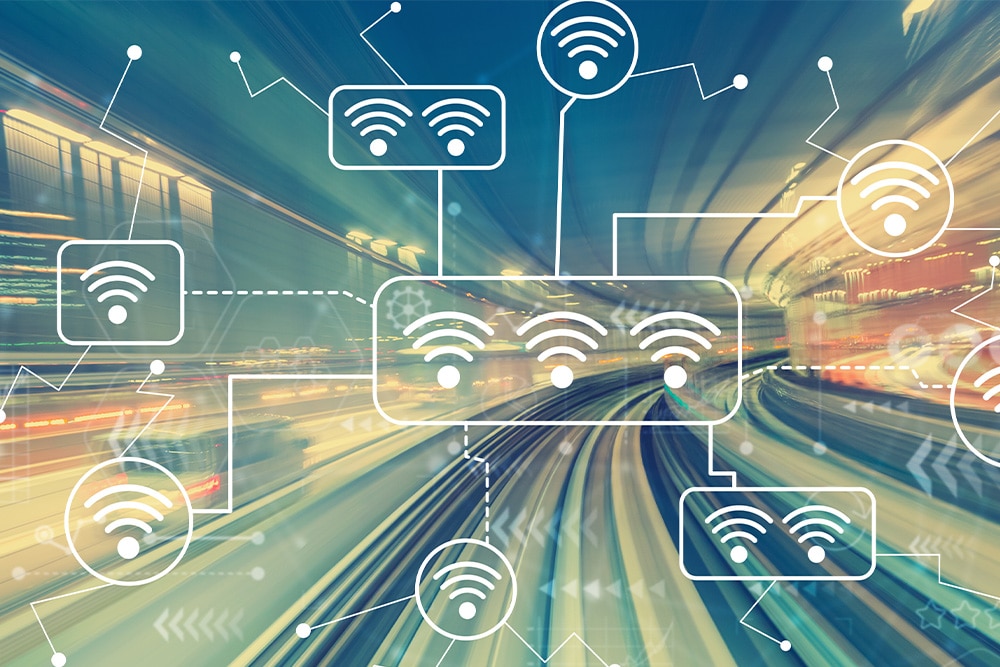The railway industry has always prioritised safety and security, but modern connectivity technologies are taking these aspects to new heights. With the advent of advanced communication systems, real-time monitoring, and predictive analytics, railways are becoming safer and more secure than ever before. This article explores the myriad benefits of modern connectivity in enhancing rail safety and security.
Real-Time Monitoring and Surveillance
Continuous Track and Train Monitoring
Modern connectivity allows for continuous monitoring of tracks and trains. Sensors installed on tracks and trains provide real-time data on conditions such as track integrity, train speed, and operational status. This constant flow of information helps identify potential issues before they escalate, ensuring timely maintenance and preventing accidents.
Enhanced Surveillance Systems
Connectivity has revolutionised surveillance on trains and at stations. High-definition CCTV cameras, combined with real-time data transmission, enable constant monitoring of public areas. This advanced surveillance system deters criminal activities and allows for immediate response in case of any suspicious behaviour or security breaches.
Improved Communication Systems
Instant Communication Between Staff
Modern connectivity facilitates instant communication between train staff, control centres, and emergency services. In the event of an incident, staff can quickly relay information and receive instructions, ensuring a swift and coordinated response. This seamless communication is crucial for managing emergencies and maintaining safety.
Passenger Communication
Enhanced communication systems also benefit passengers. Through mobile apps and onboard information systems, passengers can receive real-time updates about their journey, including safety information and emergency instructions. This transparency helps keep passengers informed and reassured, particularly during disruptions or emergencies.
Predictive Maintenance and Proactive Measures
Predictive Analytics
Connectivity enables the use of predictive analytics for maintenance. By analysing data from sensors on trains and tracks, potential issues can be identified before they cause problems. Predictive maintenance ensures that repairs are carried out proactively, reducing the risk of accidents and improving overall safety.
Automated Safety Checks
Advanced connectivity allows for automated safety checks. Systems can continuously monitor various components of the rail network, such as signalling equipment and level crossings, and automatically alert maintenance teams to any anomalies. This automation reduces the reliance on manual inspections and ensures that safety standards are consistently met.
Enhanced Emergency Response
Rapid Incident Detection and Response
In the event of an incident, modern connectivity ensures rapid detection and response. Real-time data from various sources, including surveillance cameras and sensors, allows for immediate identification of issues. Emergency services can be quickly alerted and dispatched, minimising the impact of incidents and ensuring passenger safety.
Coordination with Emergency Services
Connectivity enhances coordination with external emergency services, such as police, fire brigades, and medical teams. Integrated communication systems ensure that all relevant parties are promptly informed and can collaborate effectively. This coordination is vital for managing large-scale emergencies and ensuring a swift resolution.
Passenger Safety Features
Real-Time Alerts and Notifications
Passengers benefit from real-time alerts and notifications delivered through mobile apps and onboard information systems. These alerts can provide important safety information, such as changes in train schedules, platform alterations, and emergency instructions. Keeping passengers informed enhances their safety and helps manage expectations during disruptions.
Personal Safety Apps
Some rail operators offer personal safety apps that passengers can use to report incidents, request assistance, and access emergency information. These apps empower passengers to take control of their safety and ensure that help is always within reach.
Cybersecurity Measures
Protecting Data and Systems
With the increasing reliance on connectivity, cybersecurity has become a critical aspect of rail safety. Modern connectivity solutions include robust cybersecurity measures to protect sensitive data and critical systems from cyber threats. These measures ensure that the rail network remains secure and resilient against cyber-attacks.
Secure Communication Networks
Ensuring that communication networks are secure is vital for maintaining the integrity of safety and security systems. Encrypted communication channels and secure data transmission protocols protect against unauthorised access and ensure that safety-critical information is accurately relayed.
Conclusion
Modern connectivity is revolutionising safety and security in the rail industry. Through real-time monitoring, enhanced communication, predictive maintenance, and robust cybersecurity measures, railways are becoming safer and more secure for passengers and staff alike. As connectivity technologies continue to evolve, the rail sector will further enhance its safety standards, providing even greater peace of mind for all who travel by train.
#RailSafety #SmartRail #ConnectedTransport #RailSecurity #ModernRailways #RailInnovation #SafetyFirst #SecureTravel #RailwayTech #FutureOfRail
